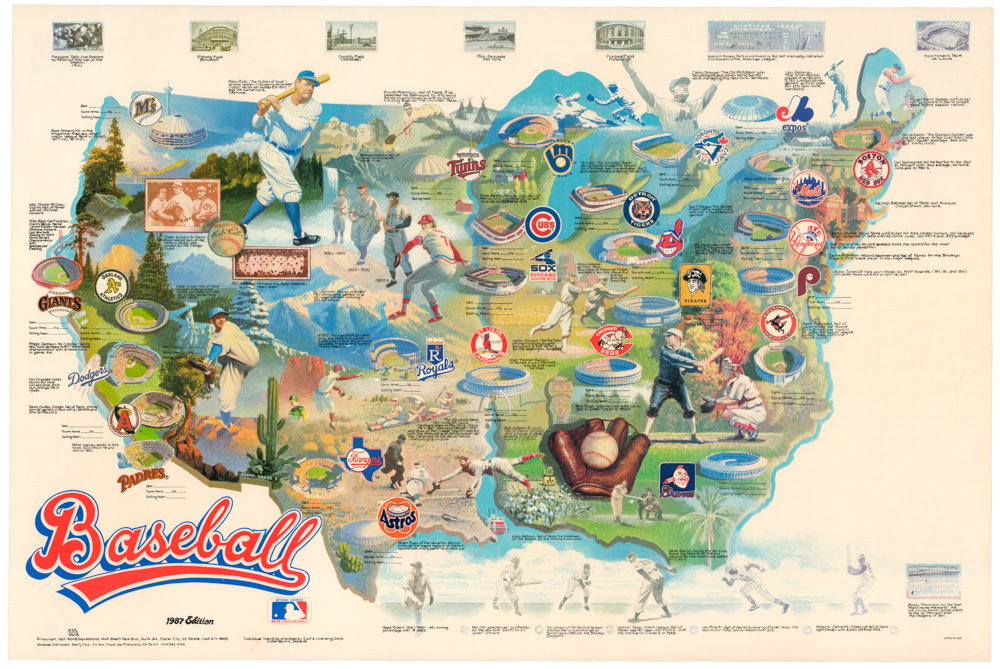The most perfect Art Nouveau travel poster ever created.
MONACO • MONTE-CARLO.
$32,500
1 in stock
Description
The rarer state without the railway company’s name — “For collectors, the art department of La Plume offered this poster without the railroad company’s text” (Rennert / Weill p. 136).
“No image captures Mucha’s refined and elegant style as flawlessly as his advertisement poster for the Monaco/Monte Carlo railway.”
Alphonse Mucha rose to fame as a commercial illustrator during the 1890s. With his luscious style and incomparable ability to capture female beauty, he soon became highly successful and one of the leading proponents of the Art Nouveau movement flourishing all over Western Europe. Working out of Paris, his lithographic advertisements constitute the hallmark of turn-of-the-century aesthetics and continue to draw ever higher prices.
Later in life, Mucha became a renowned and respected artist and one the great patrons in the national canon of Czech(oslovakian) art. But during the 1890s, he was still a relatively young and hungry artist working out of his studio and primarily printing his commercial lithographs with the famous Paris printer Francois Champenois.
Among Mucha’s rather extensive oeuvre of lithographic and commercial art, some exquisite compositions stand above the rest. The extravagant rendering of MONACO • MONTE-CARLO, brought to full flourish by metallic inks, establishes it as precisely such a masterpiece. The image’s composition is spectacular. The diagonal movement within it is curved, creating a swirling perspective that draws in the viewer. This curved diagonal had never been attempted before, and many art historians consider it a compositional breakthrough that heralds the modernist movements of the early 20th century.
The poster was commissioned from Mucha in 1897 by the PLM Railway Services and supported by the tourism board of Monaco and Monte Carlo. The aim was to use Mucha’s growing fame as an elegant stylist to attract wealthy tourists to the French Riviera. By this time, however, Mucha was already so well-established as a commercial artist that he was free to interpret and adapt the briefs of his commissions as he saw fit. In this case, the result was a far cry from the ordinary travel poster of the day.
Rising from the lower left corner is a swirling cornucopia of lilacs and hydrangeas that frame the heroine and host her crown of birds. Behind her, we glimpse the coastline and the blue waters of the Côte d’Azur, but any direct reference to the actual destination or the associated means of transportation is limited to the title banner at the top. Despite the elaborate ornamentation and the dominance of the female figure, Mucha somehow manages to merge his crisp style perfectly with the inherent luxury of the destination.
Mucha had an unrivaled artistic sense of the feminine, and his compositions that included female figures are distinctly beautiful. This particular poster is nevertheless far more than simply beautiful. It soars above its counterparts as a perfect expression of everything Mucha was trying to achieve as an aspiring artist. It is precisely work of this caliber that continues to mark him as the most definitive Art Nouveau artist ever.
Cartographer(s):
Alphonse Mucha (1860-1939) was a Czech/Bohemian illustrator, graphic artist, and painter who came to define the Art Nouveau movement shortly before the turn of the 20th century.
During his career’s early and formative phase, Mucha worked from Paris, living off commercial commissions for advertisement posters. Here he became a defining figure in the Art Nouveau movement and is today considered one of the finest artists of that period. Among his most famous creations were advertisements for the popular stage actress Sarah Bernhardt.
Later in life, Mucha dedicated himself to creating a national artistic vision for his people. Between 1912 and 1926, he worked almost exclusively on twelve monumental canvases known as The Slav Epic (Slovanská epopej), which today adorn the National Gallery in Prague.
Condition Description
Minor professional repairs throughout, backed on archival tissue.
References
Mucha & Henderson 1974: 70; Rennert & Weill 1984: 31; Lendl 2016: 111.





